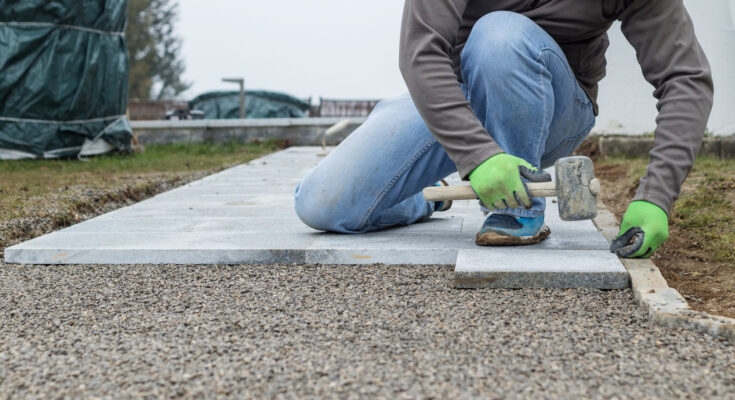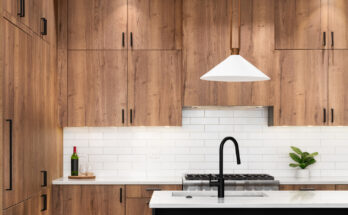Budget-Friendly DIY Garden Path Ideas That Are Worth Trying
A garden path adds functionality and beauty to your outdoor space, delineating safe walking areas and drawing the eye around. But this garden upgrade comes with its fair share of costs. The price of installing a garden path depends on several factors, including the size and labor costs. The cost of the material also impacts the total, with concrete, paver, and stone being popular options. When hiring a pro, sources estimate that these could run you anywhere from $9 to $35 a square foot.
However, one way to cut back on the cost is to do the installation yourself. It can be a big job, but it’s totally doable by dedicated home landscapers. With a focus on affordability, we’ve rounded up some economical garden path inspiration, all possible to DIY. Start by creating a strong foundation with a weed barrier and edging for the borders if needed. Then, pick a material that fits your budget and vision for the space. Ranging from no-frills and low-cost gravel paths to pricier (but still reasonable) modern paver paths, here are some ideas worth considering.
Make a simple gravel garden path
A gravel garden path is one of the easiest and cheapest options to DIY. Plus, it has quaint charm and a classic English garden feel. Pea gravel is often the best type of gravel for a landscaping pathway. You can buy about 0.5 cu. ft. of bagged pea gravel that covers up to 2.75 square feet for about $5.50. However, a pea gravel path will often need a 2 inch layer of sand or coarse gravel to stop it from sinking in, but this isn’t too expensive either. A 0.5 cubic foot bag of this base will run you about $6 and will cover 3 square feet. So in total, the materials to make your own gravel path will cost you about $4 a square foot.
Make a simple paver path
Most paver pathways are built similarly to gravel paths, with a sandy support layer underneath. You can find both of these materials on a budget. For example, a 1/2 cubic foot bag of paver sand will run you about $6 and will cover a square foot. And you can find basic, plain 12-by-12-inch concrete pavers for about $2, making the total about $8 a square foot. However, costs can rise quickly if you choose other materials, like natural stone pavers. The price will also depend on your layout. If you place fewer pavers down as stepping stones rather than a solid path, that will help save some cash.
Create your own pavers using old plastic pots
This project is a bit tedious, but lets you create a custom design using round pavers on a budget. You or the home gardener in your life might have a selection of old plastic pots (or you can put some feelers out online if someone is getting rid of some) for a low cost or free. Considering a 1-foot diameter round paver can cost about $4, it can be cheaper to make your own. You can get an 80 lb. bag of concrete mix and make four 2-inch-thick square foot pavers, using about $1.50 worth of concrete each — significant savings if you are willing to get your hands dirty. You can even imprint designs into your homemade concrete pavers, for example, by using the process to make
.
Pick up pavers or slabs to upcycle a garden path
Free materials can cut your pathway installation costs significantly. If you can find someone giving away pavers or rock slabs, you can turn their junk into an almost-free DIY garden path. Use a shovel to create a small cavity to hold each paver or rock and create your pathway shape. If the ground is uneven, you might need to add a layer of sand to stabilize the path. A 1/2 cubic foot bag of paver sand costs about $6 and covers a square foot. So, if you get the other materials for free, that will be your only cost.
Add a lick of paint to update a path on a budget
If you already have a garden path, but it’s looking rather drab, there’s an easy way to update it. A coat of paint, whether it’s a solid color or a fun pattern, can make it look like new. Just make sure to use an outdoor paint designed for stone if needed. For example, the Behr Premium Interior/Exterior Porch and Patio Floor Paint works on both concrete and wood pathways. It costs about $40 per can, so it will run you about 5 to 10 cents for a square foot of coverage. In any case, it will be more budget-friendly than tearing out and replacing the path.
Lay down wood rounds for a cottagecore path
A rustic wood slice pathway is an affordable way to add natural beauty to your lawn, perfect for a cottage vibe. If you’re already cutting down any trees and can cut your own rounds for free, it’s very budget-friendly too. If you don’t have any trees that need to come down on your property, reach out to a local tree trimming professional and see if you can get one they cut down for a deal. Once you have your rounds, treating the wood with a sealant will help it last longer. A gallon of sealant that covers 150 square feet is around $20. This brings the cost to well under a dollar per square foot if you’re able to get the wood for free.
Use a template to make a detailed concrete path
With its detailed pattern, this type of concrete path doesn’t look like an amateur project. However, a concrete mold is the TikTok-approved tool that makes DIYing this garden path a breeze. Consider purchasing more than one of the $30 molds if it’s within budget. Otherwise, you’ll have to wait for the concrete to set before you move it. A bag of concrete costing around $6 will cover about four square feet. So aside from the mold, you’ll just have to invest about $1.5 per square foot for the surface materials.
Use old bricks to create a charming path
Use salvaged bricks to create a very affordable and very charming garden pathway. You can browse sites like Craigslist and Facebook Marketplace to see if anyone is getting rid of some after a renovation. But even if you have to buy new, you can complete this project on a budget. It’s possible to find cheap bricks that cost around 25 cents per piece. A small bag of paver sand comes in at around $6 to cover a square foot or so. That puts the cost of this DIY at between $5 to $10 per square foot; even less if you source free bricks. If you don’t use them all, here are some creative DIY projects to upcycle leftover bricks.



